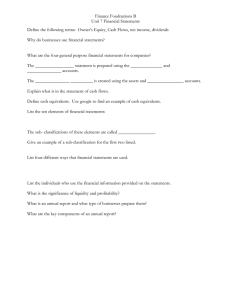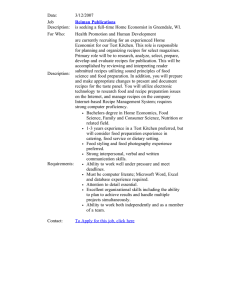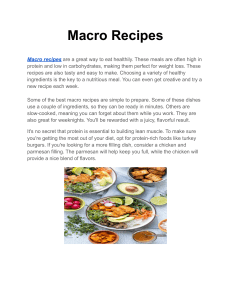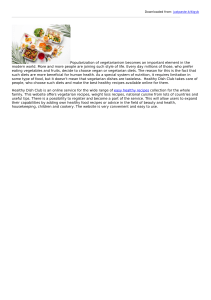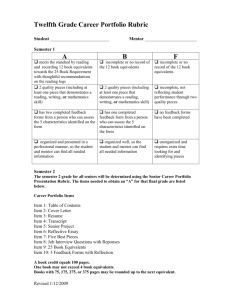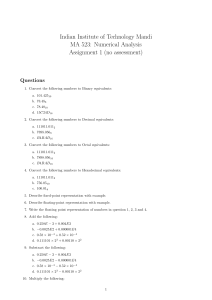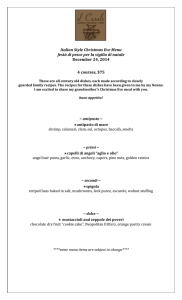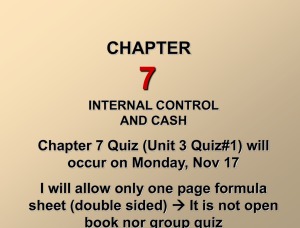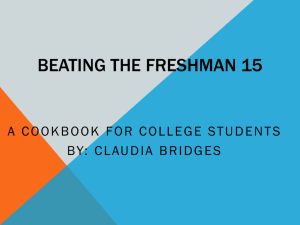ProStart Year 1 Study Outline
advertisement
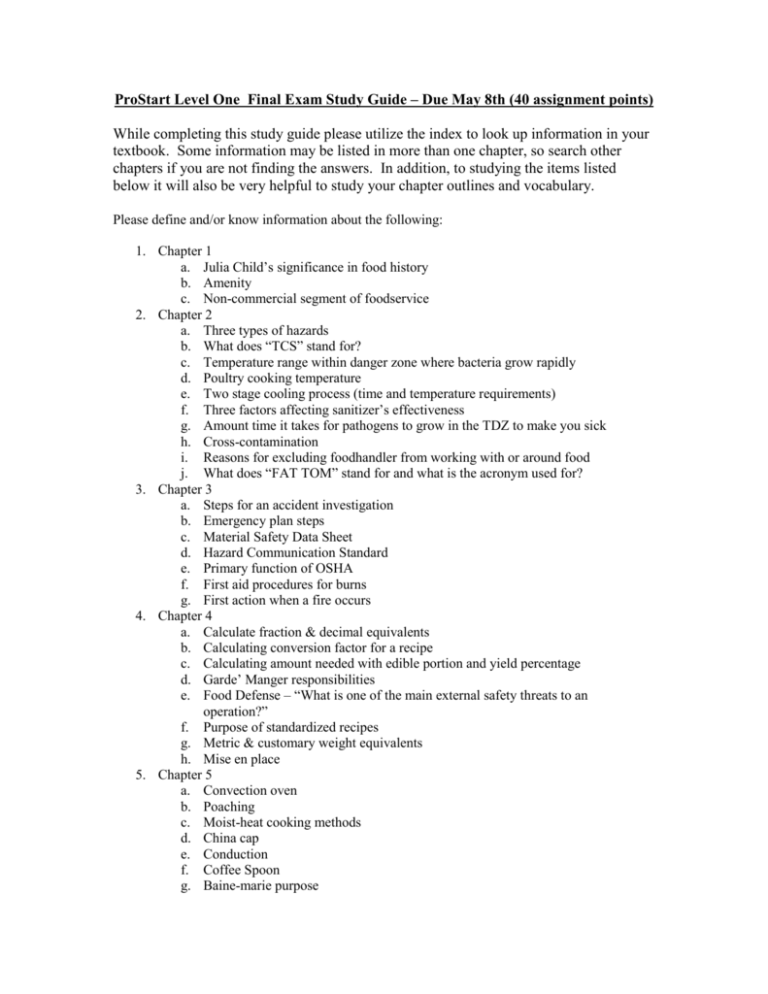
ProStart Level One Final Exam Study Guide – Due May 8th (40 assignment points) While completing this study guide please utilize the index to look up information in your textbook. Some information may be listed in more than one chapter, so search other chapters if you are not finding the answers. In addition, to studying the items listed below it will also be very helpful to study your chapter outlines and vocabulary. Please define and/or know information about the following: 1. Chapter 1 a. Julia Child’s significance in food history b. Amenity c. Non-commercial segment of foodservice 2. Chapter 2 a. Three types of hazards b. What does “TCS” stand for? c. Temperature range within danger zone where bacteria grow rapidly d. Poultry cooking temperature e. Two stage cooling process (time and temperature requirements) f. Three factors affecting sanitizer’s effectiveness g. Amount time it takes for pathogens to grow in the TDZ to make you sick h. Cross-contamination i. Reasons for excluding foodhandler from working with or around food j. What does “FAT TOM” stand for and what is the acronym used for? 3. Chapter 3 a. Steps for an accident investigation b. Emergency plan steps c. Material Safety Data Sheet d. Hazard Communication Standard e. Primary function of OSHA f. First aid procedures for burns g. First action when a fire occurs 4. Chapter 4 a. Calculate fraction & decimal equivalents b. Calculating conversion factor for a recipe c. Calculating amount needed with edible portion and yield percentage d. Garde’ Manger responsibilities e. Food Defense – “What is one of the main external safety threats to an operation?” f. Purpose of standardized recipes g. Metric & customary weight equivalents h. Mise en place 5. Chapter 5 a. Convection oven b. Poaching c. Moist-heat cooking methods d. China cap e. Conduction f. Coffee Spoon g. Baine-marie purpose 6. 7. 8. 9. 10. 11. 12. h. Scimitar knife i. Thermocouple thermometers and different probes Chapter 6 a. Roux b. Sachet d’epices c. Five mother sauces d. Slurry e. Fumet f. Degreasing Chapter 7 a. Credibility b. Semantics c. Organizational communication d. Purpose of introduction of a written message e. Empathy Chapter 8 a. Group training b. Stereotype c. Interpersonal communication d. Non-exempt employees e. Cross-training f. What does “SMART” stand for in “SMART goals”? g. Four phases of “onboarding” h. Purpose of Equal Employment Opportunity Commission Chapter 9 a. Hydroponic farming b. Examples of seed vegetables c. Fructose d. Highest USDA grade of fresh fruit e. Storage for tubers Chapter 10 a. Head waiter responsibilities b. Host c. Dram Shop laws d. French service style e. Greeters Chapter 11 a. Jasmine rice b. Arborio rice c. Russet potato d. Fresh pasta ingredients e. Garbanzo beans (recipes it is used in) f. Part of grain with most starch and protein Chapter 12 a. Illegal questions during job interview b. FAFSA form purpose c. Stress reduction plan d. Steps to take after a job interview e. Pastry chef responsibilities
